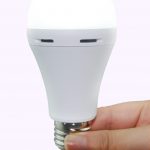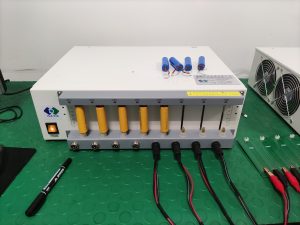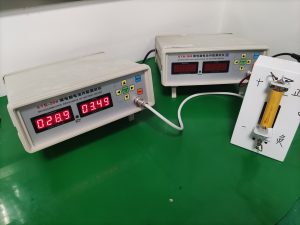July 25, 2023
When consumers buy LED Emergency Lamps, many people complain that the emergency time is very short or even non-function during first use. However The wholesalers clearly detected that the emergency function was normal when they received the goods. What reason caused this kind of customer complaint?

In fact, lithium batteries will also discharge in the case of static and open circuit, which is called “self-discharge”, also known as the charge retention capacity. Self-discharge can generally be divided into two types: Reversible self-discharge and irreversible self-discharge.
1. Reversible self-discharge means the loss of capacity that can be compensated reversibly is . The principle is similar to the normal discharge reaction of a battery. The self-discharge rate of a lithium-ion battery is generally 2% to 5% per month. Taking into account safety factors, large lithium battery factories in China generally set the factory voltage of the battery to not exceed 3.7V (88% of the rated capacity SOC). After the production, transportation, and distribution process, which takes about 2-3 months, the lithium battery voltage in the emergency lamp purchased by consumers may only be about 3V (70% of the rated capacity), thus the emergency time will be relatively short, and if it is a product in stock and there is no discharge protection circuit, then the voltage may be lower, causing the lamp can not work in the emergency time, even over-discharge until the battery voltage drops to 0V, resulting in battery failure.
In addition, the higher the ratio of the SOC of the battery and the ambient temperature during storage, the faster the self-discharge speed.
2.Irreversible self-discharge means the loss of capacity that can’t be compensated. The main reason is that irreversible reactions have occurred inside the battery, including the reaction between the positive electrode and the electrolyte, the reaction between the negative electrode and the electrolyte, the reaction caused by the impurities in the electrolyte, and the irreversible reaction caused by the micro-short circuit caused by the impurities carried when the battery is made, etc., Which will accelerate the self-discharge of the battery and cause irreversible damage to the life and safety of the battery.
Therefore, in order to improve consumers' experience and brand confidence in emergency lighting, importers and exporters need to effectively reduce battery self-discharge, as the LED Back Up Lighting specialist, T&P Litech raised up 4 suggestions:
1.Exporters should choose reliable battery suppliers, avoid the use of defective batteries or low-quality raw materials that cause the batteries to be defective or failure, strictly proceed the quality testing before production, and the battery voltage should be controlled at about 3.7V before shipment;


2.Exporters should add BMS(Battery Management System) circuits with OCP (Over Charging Protection) and ODP (Over Discharging Protection) to the drivers of emergency lighting;
3.Importers and wholesalers should keep the products in an environment of -10℃~45℃ to avoid collision and extrusion;
4.If it is an emergency light product in stock, it is recommended that importers and wholesalers replenish electricity every 3 months;
As LED Back Up Lighting Specialist, Shanghai T&P Litech Co.,Ltd. have a strict control and management to the Lithium battery, including the material, procedure, QA/QC system, brings stable and reliable quality products. For more details, please visit www.tnplitech.com or email to info@tnplitech.com.